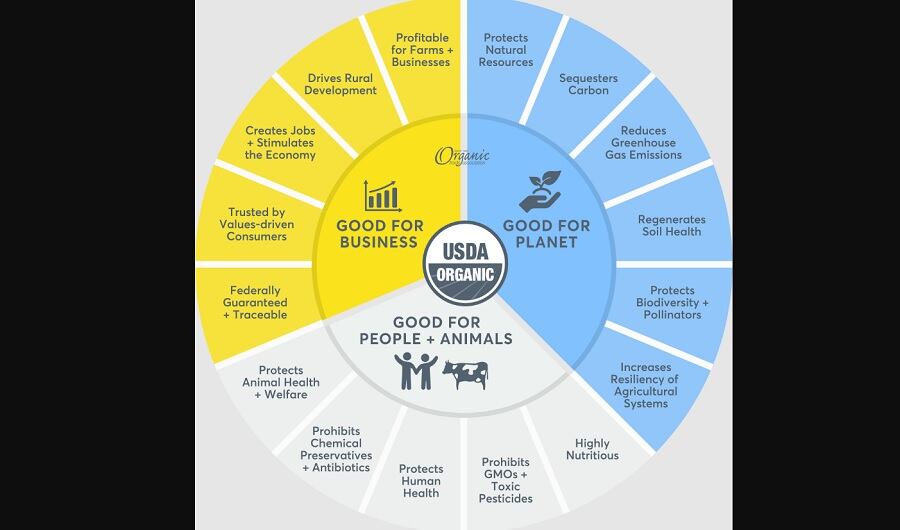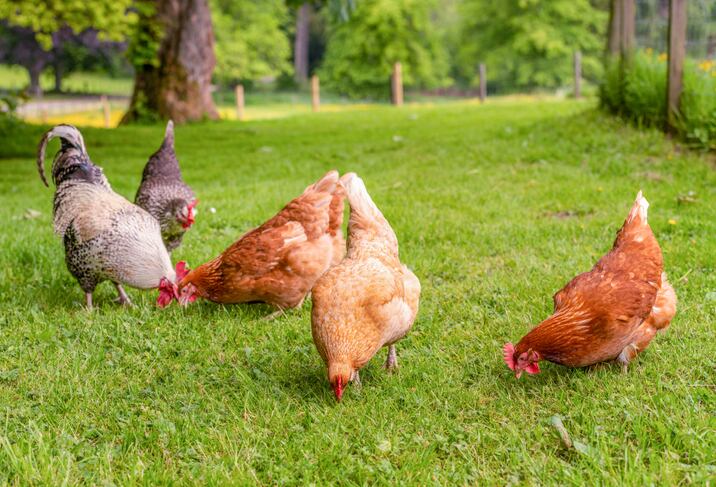The men, who have a history of working together – and sometimes butting heads before compromising for the greater good – hope to divide and conquer the challenges facing the organic industry as well as seize emerging opportunities and drive necessary regulatory and legislative change to keep pace with evolving consumer demands.
As co-chairs, Chapman will focus on OTA’s regulatory and technical affairs work, oversee development of association programs and products and be responsible for operations and financial management, while Dillon will take on the organization’s public relations, policy agenda, member engagement and fundraising, according to the trade group.
“The co-CEO model has always intrigued me. It is an unaccustomed to but not uncommon model that is out there, and when it works, it is truly magical. It really embraces collaboration and compromise as keys to success, which is what a good trade association does – it works with partners and members, who all have individual interests, and together we do what is best for the group as a whole,” Chapman told FoodNavigator-USA.
He explained that he advocated for bringing Dillon on as co-CEO because “one of the biggest headwinds facing the organic industry [and OTA] was our lack of a capacity to take advantage of all the opportunities available to organic in this dynamic time in the marketplace and what is going on with society and the movement towards climate focus.”
Having worked with Dillon for years, including while both were at Clif Bar & Company and through the OTA in the pursuit of different initiatives, Chapman said the duo has “a track record of being able to make tremendous impacts” in part by leveraging their different philosophies, approaches and skill sets to pursue a shared vision.
Dillon agreed that while both men are “two stubborn people who don’t always agree and haven’t always seen eye to eye,” they both have cultivated a deep trust, respect and open communication style that will help OTA expand and better communicate its value proposition.
Chapman, Dillon have different philosophies that work ‘hand in glove’
As the two work together to transform OTA and the broader food system, Chapman says they will take a “hand in glove” approach to change management.
He explained that his philosophy to change management is to answer stakeholders’ questions of what is in it for them and what is in it for organic at large from a business perspective.
“Organic offers a ton to business and we need to make sure those points are articulated and that the tools and resources are there and that the government is working with our members seamlessly” to place organic within the larger conversations around ESG and the climate targets they are trying to achieve and climate smart benefits, said Chapman.
“Businesses need to know what they are getting out of organic … and that the great effort and cost and expense that goes into organic is accounted for,” he said. To that end, he added, OTA needs to “make sure that the right support systems, the right resources and the right tools are available to our members to maximize the benefit of organic as much as possible.”
Dillon says his approach to change manage complements this by focusing not only on those who want transformation, but also those who are “fully recalcitrant and don’t really want to move.”
To encourage change among those who are resistant, Dillon says he will lean on public policy and clear communication as keys to transformation.
“I am going to lean in on the legislative side of government affairs and policy and to get our members to strengthen their civic muscles and use their voices as brands to start to influence the conversation in government affairs,” he said.
While he acknowledged OTA has had many legislative and regulatory successes in recent years, including three major rules related to organic livestock operations, animal welfare and strengthening enforcement to protect against fraud, many members and organic companies are “nervous about the L word – lobbying – and advocating.”
One way he plans to bolster their confidence is by clearly communicating the value of organic – something that OTA has not always done effectively, despite successful past campaigns focused on single issues, such as promoting organic as the absence of GMOs or the absence of pesticides.
Instead of focusing on what organic is not, Dillon says he wants to highlight what organic is, including how organic is good for the planet, good for people and animals, and good for business.
As a member of OTA, he helped initiate this shift in communication by helping to create OTA’s Sustainability Wheel, which he explained is “about trying to move the conversation to the value, the benefits, the excitement [of organic] and to get the movement going again so that rather than the movement being reactive towards what we’re against, have the movement be forward towards the values we can expand so that we bring in more families, more farms, more of society and the planet.”
He added that while free-from claims helped initially drive some of the organic industry’s growth, consumers have evolved and now have broader value proposition interests.
“Consumers are hearing more about the planet, especially the younger generation. It is not just climate change, but also issues like biodiversity and well-being of other people. They want to know how farmers and farm workers are impacted by the food industry and organic is a sweet spot because farm worker exposure to pesticides drops dramatically in organic production fields,” Dillon said.
“So, we see this evolving approach to consumer awareness and consumer interest in high value food that hits what they care about – their principles. And organic has so much opportunity to capture that space,” he said.
OTA prioritizes ‘continuous improvement’
For the organic industry to fully seize current opportunities, Dillon and Chapman argue it needs “continuous improvement,” which has been a battle cry by OTA in recent years as it pushes for USDA to strengthen the organic standards and codify updates for which the industry has long lobbied.
The National Organic Program was created to be a “living program” that evolved to meet industry and consumer expectations, but many of the recommendations approved by stakeholders have stalled in recent years – prompting OTA and others to call for a more predictable timeline for reviewing and updating the organic regulations.
To do this, OTA has advocated for increased funding for USDA and increased NOP oversight of certifiers to ensure standards are interpreted and implemented consistently.
While many recommendations are lingering in limbo, Chapman said in the coming year the OTA hopes to see movement on the Mushroom Production standards that NOSB recommended in 2001, and pet food standards, which was added to the Unified Agenda in the fall of 2021 as ‘long term actions,’ but were bumped in the Spring of 2022 to the list of regulatory priorities.
OTA wants to create a culture that goes beyond standards
In the coming years, Dillon says he would also like to see the conversation around organic move beyond standards to reinvigorate the culture so it is “more movement-based.”
As such, he would like to see deeper conversations between farmers, business leaders, policymakers and investors around organic’s potential to improve food and fiber or people and the planet.
“We need to have a seat at the table and drive the conversations that are about transforming our food system for climate change, social benefits and create a culture within the trade association that isn’t just about the standards – although standards are really important,” he said.
He added he would like to see the conversation expand to include how to mitigate plastic pollution, ESG diversity issues and other cultural issues that go beyond regulations.
Chapman reiterated that in the coming years he wants people to understand the full scope of what organic offers by “unlocking” the trade group’s storytelling and relationships with consumers, the media, government and other stakeholders.
This will likely require more pre-competitive communication and collaboration as well as increased retailer communication so that stores can act as ambassadors for organic to consumers.
It will also require OTA and the organic industry to tackle competitive threats from emerging value propositions, including regenerative agriculture, ‘natural’ and sustainable.
While Chapman emphasized USDA certified organic is the only such claim that is backed by the government, Dillon said the competition isn’t necessarily bad. He explained that he hopes the burgeoning regenerative agriculture movement will help more farmers adopt practices that have long been a part of the organic standard, including using cover crops.
OTA wants to hear from more than its members
As the OTA expands its reach, Chapman and Dillon say they want members and stakeholders outside of the trade group to call on the association and share their goals, challenges and ideas or promoting organic more broadly.
“Come join us at this table. Talk with us. Tell us your needs, your priorities, where you see challenges,” Chapman said. “We are in this together and we believe that a rising tide lifts all boats.”




